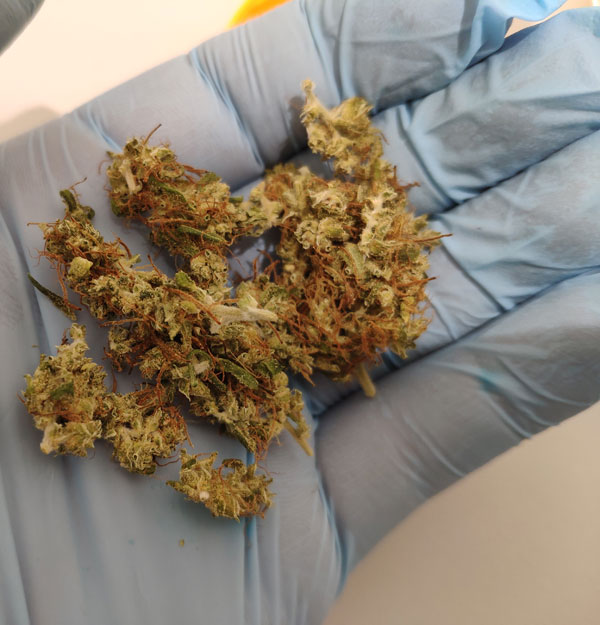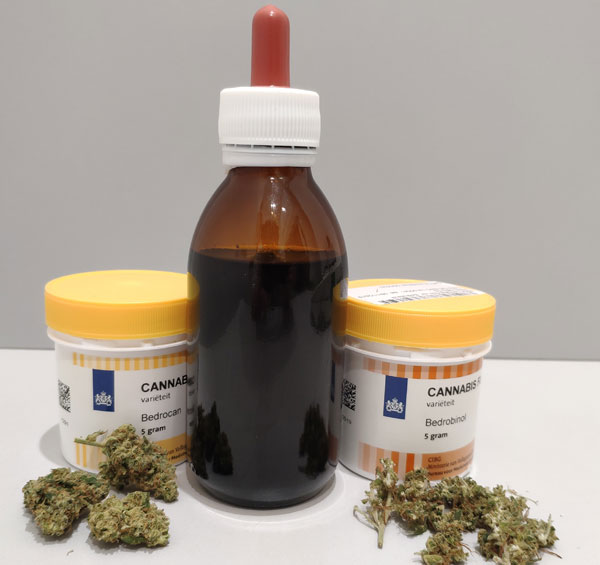Cannabis-based extracts for medicinal purposes are commonly prescribed by medical doctors for patients in Europe, where its use is legal. In Italy, for example, medical cannabis has been legal since 2013, and manufacturing extracts is a job consigned to compounding pharmacists. It is possible to get these extracts — made from flowers or granules, depending on the type of cannabis — at any pharmacy that has a laboratory equipped for it.
In Germany and the Netherlands it is also possible to access medical cannabis extracts in specialised pharmacies. The legalisation of cannabis for medical purposes in these countries dates back to 1994 and 2003, respectively.
Looking at the compounding process, pharmacists in these countries have different approaches when it comes to manufacturing cannabis-based extracts.
In Italy, compounding pharmacists have to manufacture the oil starting with medicinal cannabis flowers or in granulated form, and a medical doctor could require standardisation of oil.
In Germany, the compounding pharmacist has to dilute the concentrated solutions of medicinal cannabis extract to the specific percentage and oil prescribed by medical doctor.
In the Netherlands, compounding pharmacists work with GMP standards and adherence to them is a priority to reach the specific percentages of the main cannabinoids prescribed by medical doctor.
Currently, the only medicines that contain therapeutic cannabis extract are Sativex spray (2.7 mg of THC; 2.5 mg of CBD for every 100µl dose) and Epidiolex solution (10% CBD). Not a single medicine on the market contain extractive (non-synthetic) THC in percentages commonly prescribed by medical doctors such as medicinal cannabis extract 1.5% THC; the most prescribed by medical doctors in Italy.
The access to such extracts might change when THC-based medicinal cannabis extracts formulated in solution could be released and commercialised, but only to a certain extent because the role of the compounding pharmacist in preparing the medicines in personalised dosage and form (capsules, extracts, eye drops, etc.) for each patient will remain intact.
Personalised therapy
Producing medicinal cannabis extracts is a task where personalisation is absolutely necessary. These extracts can be formulated in any solvent where cannabinoids are soluble, such as oils (olive, peanuts, MCT) or ethanol. The doctor is the only one who decides which solvent he wants for each specific patient since different concentrations are obtained with each solvent.

In Italy, the most prescribed extracts are Bedrocan oil and Bediol oil, two strains of the Dutch company Bedrocan BV.
Bedrocan 22% THC <0.1% CBD is supplied to the compounding pharmacy in flower form whereas Bediol 6.5% THC 8% CBD is delivered in granulated form. Precisely, Bedrocan oil is prescribed in an olive oil solution in a ratio of 1:10 cannabis-solvent. This solution leads to a concentration of around 1.5% THC.
Bediol olive oil solution is also prescribed in a 1:10 cannabis-solvent ratio, which results in a concentration of approximately 0.4% THC and 0.8% CBD.
The doctor can also prescribe a standardised medicinal cannabis extract, i.e. a medicine with the exact concentration of THC and CBD: Bedrobinol 10 mg/ml in olive oil, for example.
Bedrobinol is another strain from the Dutch company. In this case, the compounding pharmacist has to prepare the oil with the specific percentage prescribed, which must be maintained for the entire duration of the oil's expiry date, with an allowed variation of only +/-10%.
As such, for Bedrobinol 10 mg/ml it is necessary, and if the expiry date is set up as 90 days, the oil has to sustain the concentration for the entire period. The only permitted variation of in this case is 9 mg/ml or 11 mg/ml.
The medical doctor can prescribe a standardised medicinal cannabis extract by simply indicating the prescribed strain and solvent with the desired concentration. This is the case of Germany and Holland, where standardised medicinal cannabis extracts are increasingly being prescribed.
Prescription and dosage
Many questions have emerged from medical doctors and patients alike about which medicinal cannabis extract is best. But there's no one better than the other because each patient needs a specific medicinal cannabis extract, so it is very important to understand what kind of patient and disease the medical doctor has to deal with.

Only when it's clear how many mg of cannabinoids it is needed to treat for patient's disease, the medical doctor chooses which cannabis extract is better for that particular case.
Oncological pain, for example, is a disease that requires up to 50 mg of THC/day. Generally, the prescription is an alcoholic medicinal cannabis extract because to reach a concentration of up to 50% THC, only a few drops will be necessary to get the dosage required.
If instead, the prescription is an olive oil medicinal cannabis extract with THC 10 mg/ml, more than 100 drops would be needed.
Such relation obviously works in the opposite case. For example, when a patient needs a few mg of cannabinoids, the doctor will have to evaluate which medicinal cannabis extract would be better to prescribe. Generally, in this case, the prescription is in olive oil or MCT; in these solvents, the cannabinoids are largely diluted, which is good for patients that use medical cannabis for the first time.
Current pharmacopoeia
The production of medicinal cannabis extracts must comply with current pharmacopoeia.
The extracts are solutions, therefore the pharmacopoeia requires that the following parameters be followed:
The concentration should be within the limit of +/- 10% of the declared active compound. If medical doctor prescribe 1% THC only 0,9% or 1,1% are allowed.
Quality control must be performed for the appearance and absence of visible particles and ph if necessary. When the medicinal cannabis extract is used in a sterile compounding form such eye drops, sterility test must be carried out and validated. Generally, compounding pharmacies send a sample of the extract to an external analysis laboratory to perform sterility tests.
Under the Italian law, for example, analysis of the percentages of the main cannabinoids THC and CBD is also required. Some compounding pharmacies have their own equipment for that, for example, HPLC-UV is commonly used. Still, many send samples to universities to carry out these checks.
When it comes to setting up the expiry date, every pharmacopoeia allows for a different time frame. For example, the Italian Pharmacopoeia suggests that for non-water solutions, and where more than 25% alcohol is present, the expiry date to be no more than 25% of the shortest period of validity of the components used, until a maximum of 6 months.
For other solutions, the expiry date is set up to 30 days starting on the date of manufacturing.
It’s possible to increase the limit of 30 days only by having studies demonstrating the stability of the compounded preparation.
Under the Italian Pharmacopoeia six months can be set up as the expiry date to non-water solution for medicinal cannabis extracts. The stability of cannabinoids, however, poses challenges as demonstrated in this 2016 study.
If six months is applied, the patients would have an oil with few cannabinoids in it after few months, whether it is stored at room temperature or refrigerated with a temperature between 2°C-8°C, as it should be. This is why in Italy most of the compounding pharmacies apply a maximum 90 days of expiry date.
In addition, verification of the correct packaging and verification of the accurate compilation of the label are also required as well as condition for storage.




